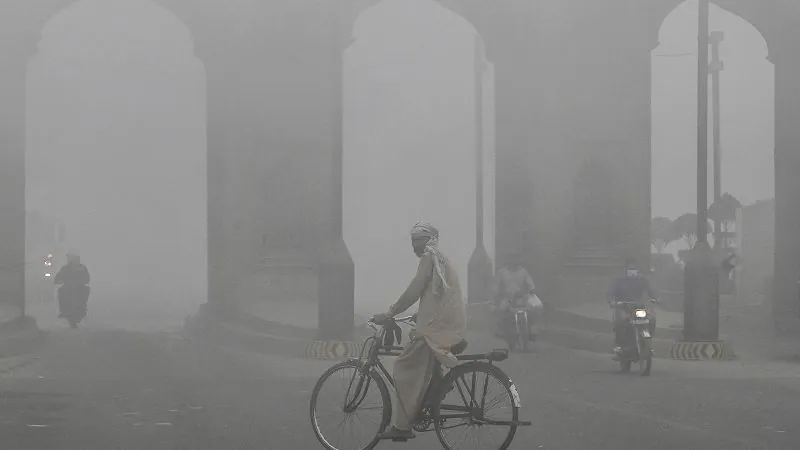
Toxic Smog Over Pakistan: A Crisis Visible from Space
2024-11-11
Author: Wei
Toxic Smog Over Pakistan: A Crisis Visible from Space
Record-breaking levels of toxic smog have engulfed eastern Pakistan and northern India, creating a haze so dense it can be seen from space. Satellite imagery from NASA Worldview starkly reveals a massive cloud of gray smog blanketing Pakistan’s Punjab province and extending into India, including over the capital, New Delhi.
This alarming pollution crisis has prompted local authorities to close schools and public spaces, threatening the health of tens of millions of residents. Reports from cities like Lahore and Multan show streets obscured by dark haze, significantly impacting visibility and daily life.
As winter progresses, pollution levels intensify in the region, primarily due to a combination of agricultural waste burning, emissions from coal-fired power plants, and vehicular traffic. The colder and drier air during winter traps pollutants close to the ground, worsening air quality even further. The air quality index in parts of Punjab, home to 127 million people, soared beyond 1,000 in recent days—a level classified as extremely hazardous. In Multan, readings for PM2.5, among the most dangerous pollutants, reached over 110 times the World Health Organization's safety levels.
PM2.5 particles pose serious health risks; they can infiltrate deep into lung tissue and enter the bloodstream, causing various health issues including respiratory diseases, heart conditions, and cognitive impairments in children. Punjab health officials reveal that hospitals are inundated with patients suffering from respiratory ailments, with more than 30,000 treated in smog-affected districts.
The Environmental Protection Agency of Pakistan reported a significant uptick in cases of lung and respiratory ailments, allergies, and irritation of the eyes and throat in regions like Faisalabad, Multan, and Gujranwala, where average air quality has reached "alarmingly hazardous" levels.
In response to this crisis, authorities have extended closure orders for schools and government offices until November 17 and shuttered parks, museums, and historical sites across 18 affected districts. New restrictions ban all outdoor activities—including sports events, festivals, and outdoor dining—in several key areas, with markets required to close by 8 p.m. to limit public exposure.
Children are particularly vulnerable to the effects of toxic air, as their developing bodies are more susceptible to respiratory issues and other health complications. Khuram Gondal, the country director for Save the Children Pakistan, emphasizes that not only does air pollution disrupt education, but it also exposes children to life-threatening conditions, such as respiratory difficulties and increased susceptibility to infections.
In light of this environmental crisis, officials in Punjab have reached out to the Indian government to foster discussions about tackling air pollution collaboratively. Punjab’s Secretary for Environment and Climate Change, Raja Jahangir Anwar, stressed the importance of "climate diplomacy" to address the region's deteriorating air quality.
With millions dying annually from air pollution-related conditions—5.1 million attributable to fossil fuel pollution alone according to recent studies—it is crucial for governments to implement long-term solutions. The ongoing climate crisis, exacerbated by extreme heat and shifting weather patterns, is likely to worsen pollution levels unless urgent action is taken.
As this toxic smog continues to shroud the region, citizens and environmental experts alike are calling for immediate governmental interventions to protect public health and initiate sustainable practices for cleaner air.



 Brasil (PT)
Brasil (PT)
 Canada (EN)
Canada (EN)
 Chile (ES)
Chile (ES)
 España (ES)
España (ES)
 France (FR)
France (FR)
 Hong Kong (EN)
Hong Kong (EN)
 Italia (IT)
Italia (IT)
 日本 (JA)
日本 (JA)
 Magyarország (HU)
Magyarország (HU)
 Norge (NO)
Norge (NO)
 Polska (PL)
Polska (PL)
 Schweiz (DE)
Schweiz (DE)
 Singapore (EN)
Singapore (EN)
 Sverige (SV)
Sverige (SV)
 Suomi (FI)
Suomi (FI)
 Türkiye (TR)
Türkiye (TR)